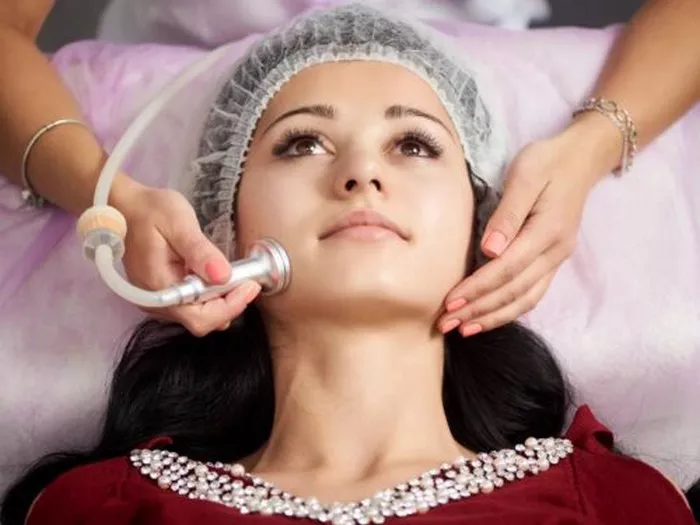Forehead wrinkles are a common concern for many individuals as they age. These lines and creases on the forehead can be caused by a combination of factors, including the natural aging process, repetitive facial expressions, sun exposure, and lifestyle habits. Fortunately, there are several effective treatments and prevention strategies available to help eliminate or reduce forehead wrinkles. In this article, we will explore the best ways to address forehead wrinkles, from non-invasive options to more advanced procedures, as well as practical steps to prevent their formation.
Understanding Forehead Wrinkles
Forehead wrinkles, also known as horizontal lines or “worry lines,” are creases that appear across the forehead due to the repeated contraction of facial muscles. Over time, the skin’s elasticity diminishes, making these lines more visible, especially during facial expressions like frowning or raising the eyebrows.
Non-Invasive Treatments for Forehead Wrinkles
a. Topical Retinoids: The regular use of topical retinoids, derived from vitamin A, is one of the most effective non-invasive treatments for forehead wrinkles. Retinoids stimulate collagen production, promote skin cell turnover, and help reduce the appearance of fine lines and wrinkles over time.
b. Botulinum Toxin Injections: Botulinum toxin injections, commonly known as Botox®, are a popular non-surgical option for treating forehead wrinkles. The injections temporarily relax the facial muscles that cause the wrinkles, resulting in smoother and softer forehead skin.
c. Dermal Fillers: Hyaluronic acid-based dermal fillers can be used to plump and fill in deeper forehead wrinkles. The injections restore lost volume and improve the overall appearance of the forehead.
d. Peptide-Based Skincare: Some skincare products contain peptides, which are short chains of amino acids that promote collagen synthesis and skin elasticity. Using peptide-based serums or creams can contribute to reducing forehead wrinkles.
Advanced Procedures for Forehead Wrinkles
a. Laser Resurfacing: Fractional laser treatments can stimulate collagen production and improve skin texture. Laser resurfacing helps diminish forehead wrinkles and promotes skin rejuvenation.
b. Chemical Peels: Chemical peels involve the application of a chemical solution to the skin, causing it to exfoliate and reveal smoother, younger-looking skin. Deeper chemical peels can target forehead wrinkles effectively.
c. Microneedling: Microneedling is a minimally invasive procedure that creates controlled micro-injuries in the skin, stimulating collagen production and reducing forehead wrinkles.
Prevention Strategies for Forehead Wrinkles
a. Sun Protection: Regularly using sunscreen with at least SPF 30 on the forehead and the entire face is essential to protect the skin from harmful UV rays. Sunscreen helps prevent premature aging and the formation of new wrinkles.
b. Hydration: Keeping the skin well-hydrated is crucial for maintaining its elasticity and preventing the formation of wrinkles. Drink plenty of water and use moisturizers with hydrating ingredients.
c. Proper Skincare: Adopting a comprehensive skincare routine that includes cleansing, exfoliating, and moisturizing helps maintain healthy skin and supports the effectiveness of anti-aging treatments.
d. Facial Exercises: Practicing facial exercises can help strengthen the underlying muscles and reduce tension in the forehead area. However, avoid excessive or aggressive facial expressions that can contribute to wrinkles.
e. Avoid Smoking: Smoking accelerates the aging process and contributes to the breakdown of collagen, leading to premature forehead wrinkles. Quitting smoking can significantly benefit the skin’s overall health.
Combining Treatments for Optimal Results
Combining different treatments can often yield more comprehensive and long-lasting results in addressing forehead wrinkles. For example, some individuals may benefit from using a topical retinoid alongside Botox® injections or dermal fillers. A tailored treatment plan, developed in consultation with a qualified dermatologist or skincare professional, can maximize the effectiveness of each approach.
Seeking Professional Guidance
Before undergoing any treatment for forehead wrinkles, it is crucial to consult with a qualified dermatologist or skincare professional. They can evaluate an individual’s specific skin condition, concerns, and medical history to recommend the most appropriate and safe treatment options.
Conclusion
Forehead wrinkles can be effectively treated and minimized through various non-invasive and advanced procedures. Topical retinoids, botulinum toxin injections, dermal fillers, chemical peels, laser resurfacing, and microneedling are among the most effective treatments for reducing forehead wrinkles. Combining treatments, such as using topical retinoids in conjunction with injectables or resurfacing procedures, can further enhance results.
Preventing forehead wrinkles involves adopting a comprehensive skincare routine, practicing sun protection, staying well-hydrated, and avoiding smoking. Facial exercises can also help maintain facial muscle tone, but caution should be exercised to avoid excessive facial expressions.
To achieve the best possible outcomes and ensure safety, it is essential to seek guidance from a qualified dermatologist or skincare professional. With the right approach and personalized treatment plan, individuals can effectively address forehead wrinkles and enjoy a smoother, more youthful forehead complexion.


